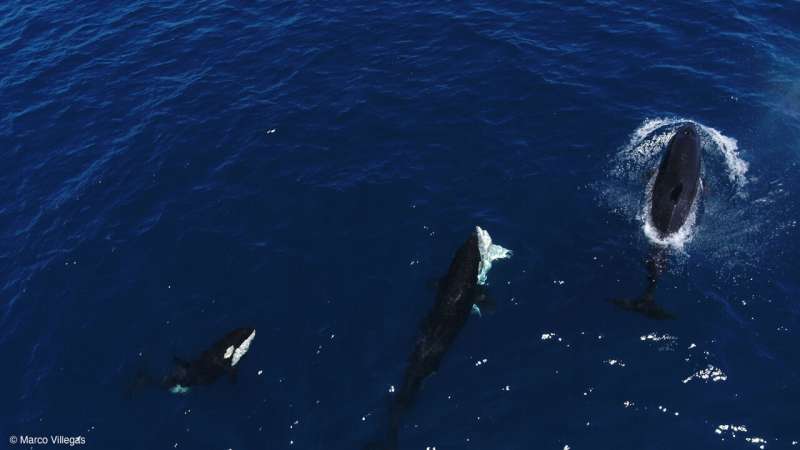A specialized pod of orcas, known as Moctezuma’s pod, has been observed hunting juvenile great white sharks in the Gulf of California. These orcas demonstrate a technique of flipping the sharks upside-down to access their nutrient-rich livers. This behavior, captured on camera, suggests a shift in predation patterns that could be linked to environmental changes and the sharks’ vulnerability.
Marine biologist Erick Higuera Rivas, project director at Conexiones Terramar and Pelagic Life, led the research published in Frontiers in Marine Science. He noted that the orcas’ hunting capabilities reflect their advanced intelligence and social learning. “Orcas that eat elasmobranchs—sharks and rays—could eat a great white shark if they wanted to,” he stated.
The research team documented two separate hunts, which resulted in the deaths of three juvenile white sharks. During the first incident in August 2020, five orcas were seen working together to turn a juvenile shark upside-down, ultimately re-emerging with its liver. A similar event occurred in August 2022, where the orcas again succeeded in flipping a shark and consuming its liver.
The technique employed by the orcas induces a state called tonic immobility, rendering the shark defenseless. “This temporary state allows the orcas to extract the liver and likely consume other organs before abandoning the rest of the carcass,” explained Higuera. The scientists speculate that the orcas have developed a specialized method to minimize the risk of injury during these hunts.
Dr. Salvador Jorgensen, a co-author of the study from California State University, emphasized that this is the first documented evidence of orcas repeatedly targeting juvenile white sharks. He noted that adult white sharks typically flee when orcas are present, leaving the younger sharks vulnerable due to their lack of experience.
The researchers identified the pod involved in the hunts as Moctezuma’s pod, named after a notable member. This pod has previously been observed hunting rays and other shark species, indicating that their experiences may have contributed to their ability to tackle great whites.
Environmental changes, particularly those associated with climate events like El Niño, may have altered the distribution of white sharks in the Pacific. These shifts could have increased the presence of juvenile sharks in the Gulf of California, putting them at greater risk from orca predation. The scientists plan to conduct further surveys to gain more insight into the dietary habits of this orca pod and understand whether they regularly hunt white sharks or primarily target juveniles.
Dr. Francesca Pancaldi of the Instituto Politécnico Nacional Centro Interdisciplinario de Ciencias Marinas, also a co-author, pointed out that while they have only observed the pod feeding on elasmobranchs so far, there may be more to uncover. She stated, “Generating information about the extraordinary feeding behavior of killer whales in this region will help us understand their critical habitats, which is essential for creating protected areas and management plans to mitigate human impact.”
As research continues, the implications of these findings could reshape our understanding of predator-prey dynamics in the marine ecosystem and highlight the need for conservation efforts to protect vulnerable species.






































































